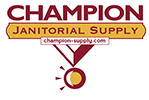
Keeping your space clean and well-maintained is essential for creating a welcoming and hygienic environment. Whether you manage a commercial facility, office space, or even your own home, having the right janitorial supplies is crucial for effective cleaning routines. In this guide, we will provide you with an essential janitorial supplies checklist to help you stock up on the necessary tools and products for maintaining cleanliness.
A well-stocked inventory of janitorial supplies not only ensures that you have everything you need to tackle various cleaning tasks but also contributes to more efficient and effective cleaning routines. With the right tools and products at your disposal, you can achieve optimal results while saving time and effort.
Throughout this guide, we will explore different categories of janitorial supplies, including cleaning tools, cleaning chemicals, personal protective equipment (PPE), and cleaning accessories. By understanding the importance of each category and having a comprehensive checklist, you can streamline your cleaning processes and ensure that no essential item is overlooked.
Whether you are a business owner, facility manager, or an individual looking to maintain a clean and healthy space, this guide will serve as a valuable resource in helping you stock up on the essential janitorial supplies needed for effective cleaning. So, let’s dive in and create a checklist that will set you on the path to cleanliness and hygiene!

Mops and Brooms
- Different types of mops and their uses:
- Wet Mops: Ideal for cleaning hard floors and removing spills or stains.
- Dust Mops: Designed to trap and remove dust and debris from floors.
- Microfiber Mops: Highly effective in capturing dirt and bacteria on different surfaces.
- Sponge Mops: Great for cleaning tiled floors and absorbing liquid spills.
- Choosing the right brooms for different surfaces:
- Push Brooms: Suitable for large areas and outdoor spaces.
- Angle Brooms: Perfect for sweeping corners and tight spaces.
- Indoor Brooms: Effective for indoor sweeping on various surfaces.
Vacuum Cleaners
- Types of vacuum cleaners and their functionalities:
- Upright Vacuums: Versatile and commonly used for general floor cleaning.
- Canister Vacuums: Provide flexibility for reaching tight spaces and above-floor cleaning.
- Backpack Vacuums: Lightweight and ideal for large areas and commercial settings.
- Wet/Dry Vacuums: Designed to handle both wet and dry debris, making them suitable for spills and water damage cleanup.
- Considerations for selecting the appropriate vacuum cleaner:
- Surface Type: Different vacuum cleaners have varying capabilities for different floor surfaces.
- Filtration System: Look for vacuums with effective filtration to improve indoor air quality.
- Noise Level: Consider the noise output of the vacuum cleaner, especially for noise-sensitive environments.
- Accessories and Attachments: Evaluate the available attachments to ensure they meet your specific cleaning needs.
By having a range of mops, brooms, and vacuum cleaners in your janitorial supplies arsenal, you can tackle a wide range of cleaning tasks efficiently and achieve optimal results. Make sure to choose the right tools based on your specific cleaning requirements and the surfaces you need to clean.

Surface Cleaners
- All-purpose cleaners:
- Versatile cleaners suitable for a wide range of surfaces.
- Effective for removing general dirt, grease, and grime.
- Can be used on countertops, tables, appliances, and more.
- Glass cleaners:
- Formulated to provide streak-free cleaning on glass surfaces.
- Ideal for windows, mirrors, glass tabletops, and glass display cases.
- Ensure transparency and shine without leaving residue.
- Disinfectants and sanitizers:
- Crucial for maintaining a hygienic environment and preventing the spread of germs.
- Choose disinfectants with proven effectiveness against a broad spectrum of pathogens.
- Sanitizers are useful for reducing bacteria on surfaces and objects.
Floor Cleaners
- Floor strippers and wax:
- Floor strippers effectively remove old wax and buildup from floors.
- Floor wax provides a protective layer and enhances the appearance of floors.
- Consider the type of flooring (hardwood, tile, vinyl) when selecting appropriate products.
- Floor cleaners for different flooring types:
- Choose floor cleaners specifically designed for the type of flooring you have.
- Different formulations cater to hardwood, laminate, tile, or carpeted floors.
- Ensure compatibility and follow manufacturer’s instructions for best results.
Bathroom Cleaners
- Toilet cleaners:
- Specifically formulated for cleaning and disinfecting toilets.
- Effective in removing stains, mineral deposits, and bacteria.
- Look for toilet cleaners with antimicrobial properties for added hygiene.
- Tile and grout cleaners:
- Designed to clean and brighten tile surfaces and remove grout stains.
- Available in various formulations (spray, foam, gel) for convenience and effectiveness.
- Shower and tub cleaners:
- Formulated to remove soap scum, hard water stains, and mildew from shower and tub surfaces.
- Choose cleaners that are safe for different materials such as porcelain, fiberglass, or acrylic.
By stocking up on a variety of surface cleaners, floor cleaners, and bathroom cleaners, you can ensure that you have the right products to tackle specific cleaning tasks in different areas of your facility or home. Remember to read and follow the instructions on the labels for safe and effective use of these cleaning chemicals.

Personal protective equipment (PPE) is crucial for ensuring the safety and well-being of cleaning staff and individuals involved in cleaning tasks. In this section, we will focus on two essential PPE items: gloves and protective clothing.
Gloves
- Different types of gloves and their uses:
- Disposable Gloves: Lightweight and hygienic, suitable for one-time use and minimizing cross-contamination.
- Nitrile Gloves: Resistant to chemicals, providing protection when handling cleaning chemicals and harsh substances.
- Latex Gloves: Flexible and comfortable, ideal for general cleaning tasks.
- Rubber Gloves: Durable and waterproof, offering protection against water, cleaning solutions, and potential hazards.
- Importance of wearing gloves during cleaning tasks:
- Protects against direct contact with harmful substances, chemicals, or infectious materials.
- Prevents skin irritation, allergies, and the spread of germs.
- Enhances grip and dexterity, allowing for better control during cleaning tasks.
Protective Clothing
- Aprons or coveralls:
- Shield clothing from spills, splashes, and stains during cleaning.
- Choose aprons or coveralls made of water-resistant or waterproof materials for maximum protection.
- Consider adjustable or disposable options for convenience and hygiene.
- Shoe covers:
- Prevent tracking dirt, debris, or cleaning chemicals from one area to another.
- Disposable shoe covers are convenient for single-use and minimizing cross-contamination.
- Reusable shoe covers with non-slip soles offer durability and improved traction.
By providing appropriate gloves and protective clothing, you can ensure the safety and well-being of cleaning staff while minimizing potential risks and hazards. Encourage the consistent use of PPE during cleaning tasks to promote a safe and healthy working environment.
Remember, proper training on PPE usage and disposal is essential to maximize their effectiveness and maintain hygiene standards.

Cleaning accessories play a vital role in making cleaning tasks more efficient and effective. In this section, we will explore two essential cleaning accessories: trash bags and microfiber cloths.
Trash Bags
- Different sizes and types of trash bags:
- Small Trash Bags: Suitable for small waste bins in offices or bathrooms.
- Medium Trash Bags: Ideal for general-purpose use in common areas or kitchens.
- Large Trash Bags: Designed for larger waste bins or heavy-duty cleaning tasks.
- Heavy-Duty Contractor Bags: Provide extra strength for bulky or sharp objects.
- Choosing the appropriate trash bags for different waste streams:
- Clear Bags: Suitable for general waste to ensure proper disposal and easy identification.
- Colored Bags: Can be used for specific waste streams, such as blue for recycling or red for hazardous materials.
- Biodegradable Bags: Environmentally friendly options that break down naturally.
Microfiber Cloths
- Advantages of using microfiber cloths:
- Highly absorbent and can hold more liquid than traditional cloths or paper towels.
- Lint-free and non-abrasive, making them safe to use on various surfaces without scratching.
- Effective at trapping and removing dust, dirt, and bacteria without the need for chemical cleaners.
- Durable and reusable, providing cost savings and reducing environmental impact.
- Different colors for different areas to avoid cross-contamination:
- Assign specific colors to different cleaning tasks or areas to prevent the spread of germs.
- For example, use blue cloths for cleaning glass and mirrors, green for general surfaces, and red for high-risk areas like restrooms.
By stocking up on a variety of trash bags and incorporating microfiber cloths into your cleaning routine, you can enhance the efficiency and effectiveness of your cleaning tasks. Remember to select the appropriate trash bags based on size and waste stream requirements, while utilizing color-coded microfiber cloths to minimize cross-contamination and promote hygienic cleaning practices.

Conclusion
Maintaining a clean and hygienic environment is essential for the health and well-being of individuals in any space, whether it’s a workplace, educational institution, or residential setting. By stocking up on the essential janitorial supplies, you can ensure that you have the necessary tools and equipment to carry out effective cleaning tasks.
Throughout this guide, we have covered various categories of janitorial supplies, including cleaning tools, cleaning chemicals, personal protective equipment (PPE), cleaning accessories, and more. Each category plays a crucial role in achieving optimal cleaning results and promoting a safe and healthy environment.




